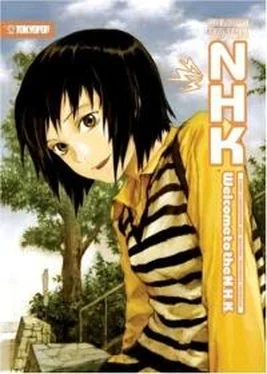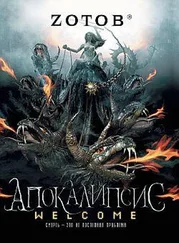I owe a lot to many people this time around, too. Everyone who had something to do with this book and everyone who is reading it, thank you so very much.
I still will do my best after this. I will get pumped up and try hard.
Tatsuhiko Takimoto
December, 2001
Several years have passed since I wrote, “I still will do my best after this.” I have not done my best. Proof of that is in the fact that I haven’t written a single new story. I’ve been reduced to a NEET [41] A more socially acceptable term for hikikomori that has sprung up in the past few years.
, living as a parasite on the royalties from this book.
This may be the result of trauma or something like that. Because of it, I developed a strange disease in my brain. Because of this disease, which causes everything to remind me of the trauma, it makes my brain cry out. It makes my brain cry out each time I try to write a story. My brain always is crying out—and because of that, I have become unable to write stories at all. Because of the terrible fear that I faced when I wrote this book, I no longer want to write stories and have become completely unable to write any. Oh, what a terrible tragedy! For a young and talented (at least, he thinks so) writer to have become incapacitated because he wrote this book!
You must read this now. A rare, dark mystique is hidden in this book, which holds the cursed origins I have explained above. It seems that a comedy manga writer long ago went crazy and often would disappear, but there was likely a ghastly force contained within the work that destroyed him, mentally. Because there must be some similar force within this book, it is a book that I confidently can recommend to anyone. It can even help with home and office communication. This book is optimal as a graft onto discussions like, “Hey, do you know the N.H.K.?” and then, someone will say, “The Nihon Hikikomori Kyokai, right? It’s really funny. But it made me cry a little, too.”
It’s embarrassing to mention something that’s selling so well, but no one knows minor works. One could say that a book around this level is indeed the masterpiece that truly could help everyone’s communication. There are jokes about all sorts of current events included, and it’s extremely useful for helping young people think about the present times. It could even be said that if you read this book, you’ll be able to understand the feelings of young people who live in our society today. Older people will be surprised, thinking, “Oh, really? Young people nowadays are like this?!” And those of the same age as the characters in the book will sympathize, thinking, “I understand! I understand! This sort of thing happens all the time!” and can enjoy reading it. At least, I think this book has as much value as its price. I promise that it would take first place in a ranking of “books that you won’t lose anything by reading.”
I feel not even the slightest pang of guilt over giving you the above sales pitch. That’s the honest-to-God truth, although these are days when I can’t hold onto any sort of conviction that God actually exists.
Let’s get back on track. It’s already spring. It’s already warmed up. Birds come to the tree outside my window. In light of that natural cycle, a deep belief that one day, all my daily troubles will be solved boils up inside my chest.
Identity … Love … Existence … Space … God … The time must come, someday, when we will be granted a final answer regarding these great mysteries. With that warm feeling buried in my heart, I keep living. Hoping that this feeling of gratitude will reach all of you who are reading this work, I now close my laptop.
Tatsuhiko Takimoto
April, 2005
One measure of Japanese room size uses the number of tatami (straw mats) needed to cover the floor.
Heated tables used in the winter for warmth, as most apartments do not have central heating.
New Year’s celebrations often include o-zouni, a special soup of rice dumplings and vegetables. Although New Year should be happy, the narrator remains depressed.
The Japanese Ministry of Health defines hikikomori as individuals who refuse to leave their house and isolate themselves from society and family in a single room for a period exceeding six months; typically, it's a young person or a “nerd” who feels cut off from society.
Kyokushin (ultimate truth) karate is a full-contact style of martial arts, founded in 1964 by Masutatsu Ohyama (1923-1994), a Korean-born master reputed to have trained alone for years on Mt. Minoubu and Mt. Kiyosumi.
Tatsuhiko Shibusawa (1928-1987) was a scholar, novelist, and essayist.
A classic Gainax anime based loosely on 20,000 Leagues Under the Sea.
Although otaku is an honorific of the word taku, or home, it has an extremely negative meaning in Japan. It suggests an overzealous anime or video game fan who does nothing but stay at home and pursue his hobbies.
The more literal meaning of the Japanese proverb is “the name reveals the body”, but its import is closer to the Latin proverb: Nomen est omen, meaning name is an omen (of that which is named).
Japanese Broadcast Association.
As is probably evident, Japanese Hikikomori Association.
Released in English as Magical DoReMi, it’s a children’s show about magical witch girls.
Tower of Druaga is an old NAMCO game for the NES.
The name of his apartment, apparently located in the Mita area.
Japanese expression for young people, not including students or housewives, who lack full-time employment or are underemployed.
Technical, gimmicky school for people who want anime/manga/ game industry jobs. Pretty much anyone can get in.
A Japanese Order (decoration) established in 1937. The order has only one class and may be awarded for contributions to Japan’s art, literature, or culture; recipients also receive a lifetime annuity.
John 3:20.
John 3:36.
Romans 6:23.
Holiday week in Japan, April 29-May 5.
The rainy season usually lasts from June to July in Japan.
Company that makes erotic fiction.
In Japanese, erotic game often is called eroge, which is why this lie is plausible.
Gakken Mu is a group of people obsessed with the supernatural and strange, based around the magazine of the same name.
Ruri Hoshino is a character from Martian Successor Nadesico.
An energy drink.
Katsushika Hokusai, the legendary printmaker.
Three-Day Tororo is a dish of grated Japanese yam (tororo) that is eaten on the third day of the new year, hence its name.
Ping pong is the conventional Japanese onomatopoeia for both doorbells and game show success indicators.
Читать дальше












